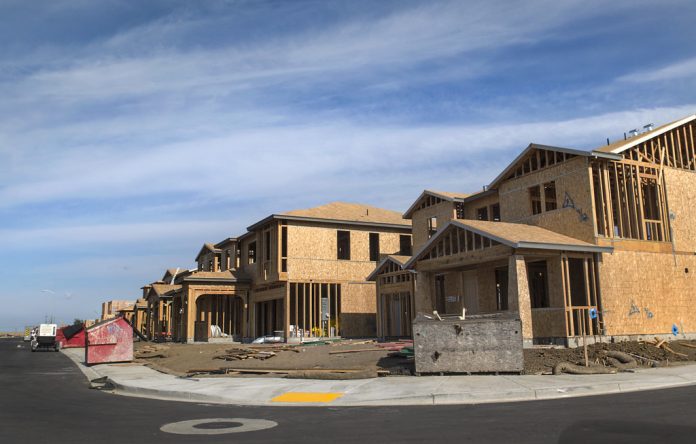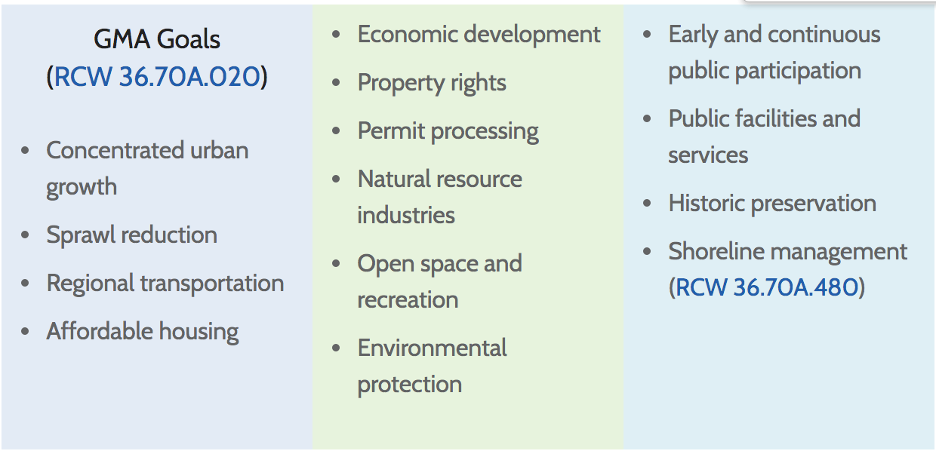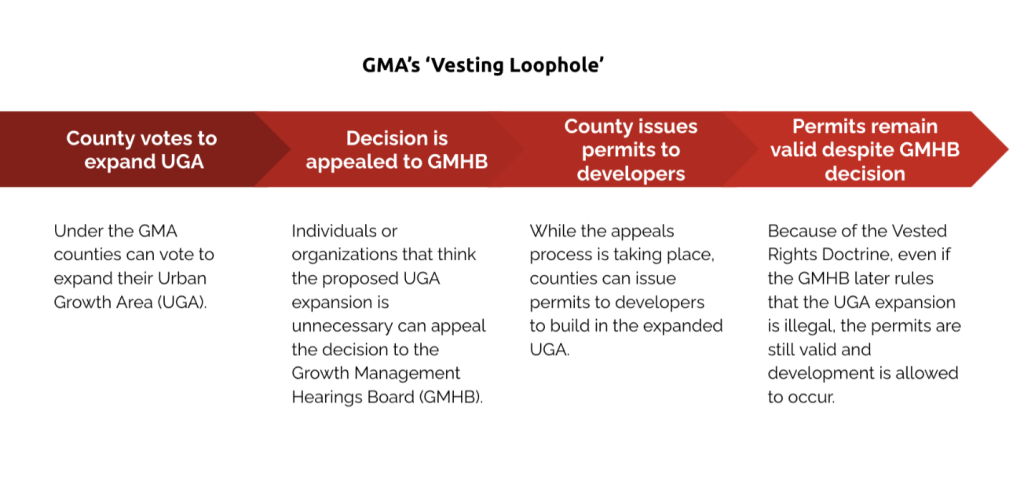
How a major loophole in the Growth Management Act has allowed unnecessary sprawl and non-compliant development to gobble up our rural lands for decades.
Note: This article was revised on 10/29/21 to reflect Futurewise’s decision to rename the “vesting loophole” as the “illegal growth loophole” to more clearly convey to the public its negative consequences.
This is the first installment of a three-part series that will explain what the Growth Management Act Illegal Growth Loophole is, what it looks like in practice, and how Futurewise is working to fix the loophole in 2022 to protect our rural lands and communities.
Our Starting Point: A brief history of the Growth Management Act
Before we can get into the loopholes, let’s remind ourselves where we started thirty years ago.
The Growth Management Act (GMA) was written in 1990 when Washington was experiencing unprecedented growth. Lacking the tools to deal with such rapid growth, sprawling, low density developments were gobbling up forests and farmland. This unchecked growth was also driving up costs for taxpayers and rate payers as public facilities and services became more difficult to accommodate.
A group of grassroots activists led the charge to pass the GMA, a first-of-its-kind body of policy to set a statewide framework offering guidance and resources for cities and counties to effectively manage growth and plan for vibrant communities. The GMA sets a vision for Washington with compact, well designed, and well-furnished cities and towns that are encompassed by working farms, forests, mineral resources and rural landscapes. To accomplish this vision, the cities and counties that plan under the GMA are required to write comprehensive plans, updated on eight-year cycles, to in which they articulate plans to accommodate their projected population growth. There are 14 goals that form the basis of city and county comprehensive plans.

What happens when things go sideways: The GMA Appeals Process
The ideals laid out in the GMA are great on paper, but what happens in practice? Well, surprise surprise, not every city or county is super keen on limiting suburban sprawl. That’s where the Growth Management Hearings Board (GMHB) comes in.
The (GMHB) is the body that hears and helps resolve disputes regarding the decisions of a city, county, or agency as it pertains to their comprehensive land use plans, development regulations, or shoreline master programs adopted under the GMA. If a city or county is thought to be acting out of compliance with the GMA, a group like Futurewise may bring an appeal to the GMHB, who will then make a ruling on whether or not the proposed action is legal. Thus, the GMHB is the body through which citizens, organizations, and governments can hold cities and counties accountable for adhering to the GMA.
Ok, that all sounds good to me — what’s the problem? Enter: the Vesting Rights Doctrine Loophole
At its inception, the foundational objective behind the GMA was to create a tool that would protect forests, farmlands, and critical habitats by limiting urban sprawl through the concentration of growth in urban areas.
Unfortunately, there’s a huge loophole in the GMA that undermines these goals. Here’s how: When drafting comprehensive plans, counties identify where the majority of their projected population growth will be concentrated, what’s called urban growth areas (UGAs). While there are certain rules that limit a county’s ability to extend utilities and other services outside of their UGA, counties can vote to expand or reduce the growth area boundary if they think it is necessary to accommodate their projected growth.
It’s these UGA expansions that are at the heart of this loophole. See, Washington has a policy called the Vested Rights Doctrine. This is a weird and wonky policy, but it is important, so let’s break it down.
When a developer wants to build, they are required to have proper permits. In Washington, The Vested Rights Doctrine says that a property owner or developer’s rights to build are “vested” as soon as that permit application is complete. This essentially freezes a developer’s rights and responsibilities in time, no matter how long they wait to complete the project or what subsequent changes might be made to regulations that would have otherwise impacted their development.
Over the years, vested rights have successfully undermined the original intent of the GMA to manage growth, prevent sprawl and protect rural habitats because of its impact on the expansion of UGAs. Here’s how: Say that a county wants to expand its UGA into prime agricultural land to build a nice, sprawling neighborhood of mega-mansions. However, a group like Futurewise thinks the expansion is unnecessary to accommodate projected growth, so appeals the expansion to the GMHB. While the appeals process is taking place, the county proceeds to issue building permits, subdivision permits, or development agreements to developers to build on the land that would be within the newly expanded UGA. Under the current framework, if the GMHB later rules that the expansion is illegal, any permits issued for new construction in the expanded UGA are still valid and development can proceed. Goodbye farmland, hello mega-mansions.
These illegal UGA expansions gobble up local farmland, forests, and critical habitats for suburban sprawl and put a strain on providing adequate facilities and services. They can also cause local governments to lose the opportunity to apply for certain state grants if they are found to be out of compliance with the GMA.
With the 2020 census revealing that Washington’s population has grown 14.6% since 2010, the question of how to plan our cities in a way that accommodates growth while addressing some of the biggest social and environmental crises facing our state remains as pertinent as ever. Growth will need to occur, and so long as this loophole exists, there will be people who exploit it for irresponsible development on lands that we desperately need to protect.
To learn more about what the illegal growth loophole looks like in practice and the impacts that it has had on our state, stay tuned for the second installment of this three-part series.
For a more in-depth look on the illegal growth loophole and its impact on the GMA, check out the Washington League of Women Voters 2017 report.
Futurewise works throughout Washington State to encourage healthy, equitable, and opportunity-rich communities and to protect our most valuable farmlands, forests and water resources through wise land use policies and practices. Founded to help support implementation of the first-in-the-nation Growth Management Act, we focus on directing equitable growth into our urbanized areas and preventing the conversion of wildlife habitat, open space, farmland, and working forests to subdivisions and development.


